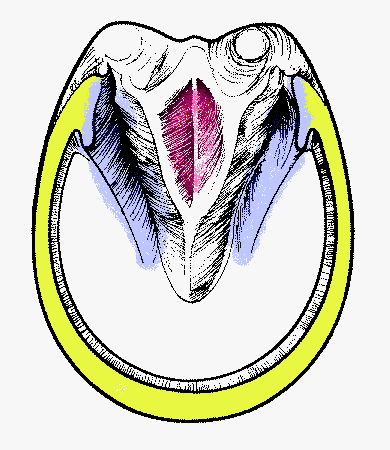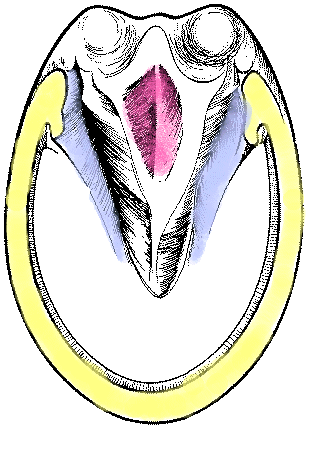Contracted Heels in Horses
by Robert N. Oglesby DVM
Introduction
Introduction
»
Diagnosis
»
Causes
»
Treatment
»
Prognosis
»
More Info & Discussions
Contracted heels is a common problem in horses and usually diagnosed by appearance alone. There are several several reasons why a horses heels contract and can be hard to correct after it has occurred. This article deals with the appearance, causes, treatment, and prevention.
Diagnosis
Introduction
»
Diagnosis
»
Causes
»
Treatment
»
Prognosis
»
More Info & Discussions
Contracted heels do not usually cause pain but they often accompany chronic lameness. The diagnosis is made by looking at the solar surface and seeing the sulcus narrowed and the bulbs of the heel have moved together. When severe the sulcus may be little more than a slit with a deep cleft.

Normal Front Foot Sole
|

Normal Hind Foot Sole
|

Contracted Heels
|
|
In the healthy fore foot notice the open sulcus (
red
) and the distance between the bulbs of the heels. Though the hind foot is a bit more narrow the sulcus is still open. Some horses front feet may be this narrow. The contracted heeled foot shows how close together the bulbs of the heels is and the sulcus can become closed up with a deep cleft that may run all the way up to between the bulbs
|
Though the contracted heels are not painful there are some problems associated with it. If the sulcus is narrow and has a deep cleft it will trap dirt and moisture so it promotes thrush. This may lead to exposed sensitive tissue that is painful. Thrush is easy to diagnose with the black exudate and odor. If it has penetrated through the horn of the frog there with be extreme sensitivity to light touching of the area and when cleaned up there may be light bleeding.
Contracted heels often result in a frog where the horn is thin and does not protect the sensitive tissue well. This makes it difficult for some of these horses to go barefoot on hard gravelly surfaces, so shoes may be required.
Causes
Introduction
»
Diagnosis
»
Causes
»
Treatment
»
Prognosis
»
More Info & Discussions
To read more on this topic become a member of
Horseadvice.com! Your membership gets you instant access to this and over 600 equine articles on our site. Other benefits of your membership include participation in our discussion boards and access to our one button PubMed search tool for each topic.
Horseadvice.com educates you to be a more knowledgeable horse owner which leads to healthier horses and save you money, we guarantee it. Come Join Us!
 Normal Front Foot Sole
Normal Front Foot Sole
 Normal Hind Foot Sole
Normal Hind Foot Sole
 Contracted Heels
Contracted Heels